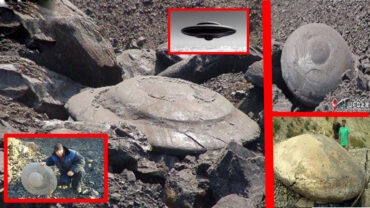A Massive 4,000 Year Old Monolith Split With Laserlike Precision
The massive rock, located in Saudi Arabia, is divided in half with extreme precision and has curious symbols depicted on its surface, in addition, the two divided stones managed to remain standing, perfectly balanced, for centuries. This incredible ancient stone structure attracts thousands of tourists every year, who come to Al-Naslaa to observe its perfection and balance, and several theories try to explain its origin.

Megalith was discovered by Charles Huver in 1883 and, since then, it has been the subject of debate among experts, who share opinions as to its origin. The rock is in perfect balance, supported by two bases, and everything indicates that at some point, it may have been worked with extremely precise tools. Recent archaeological discoveries show that the region where the rock is located was inhabited since the Bronze Age, which dates from 3000 BC to 1200 BC
In 2010, the Saudi Commission for Tourism and National Heritage, announced the discovery of another rock near Tayma, with a hieroglyphic inscription of the pharaoh Ramses III. Based on this discovery, the researchers hypothesized that Tayma could have been part of an important land route between the coast of the Red Sea and the Nile Valley.
Some researchers suggest natural explanations for the mysterious cut. One of the most accepted is that the floor would have moved a little under one of the two supports and the rock would have broken. Another hypothesis is that it could be from a volcanic dike, or from some weaker mineral, which has solidified.
Others believe that it could be an old pressure crevice that was pushed against the other, or that it could be an old fault line since the fault movement generally creates a weakened rock zone that erodes relatively easier than the surrounding rock.

But that, of course, are just a few among many theories. What is certain is that this extremely precise cut, dividing the two stones, has always raised more questions than answers.
According to reports, the oldest mention of the oasis city appears as “Tiamat”, in Assyrian inscriptions dating from the 8th century BC, when the oasis turned into a prosperous city, rich in water wells and beautiful buildings.
Archaeologists have also discovered cuneiform inscriptions, possibly dating from the 6th century BC in the oasis city. Interestingly at this time, Babylonian king Nabonidus retired to Tayma for worship and search for prophecies, entrusting the reign of Babylon to his son, Belshazzar.
The region is also rich in history, being mentioned several times in the Old Testament, under the biblical name of Tema, one of the sons of Ishmael.



